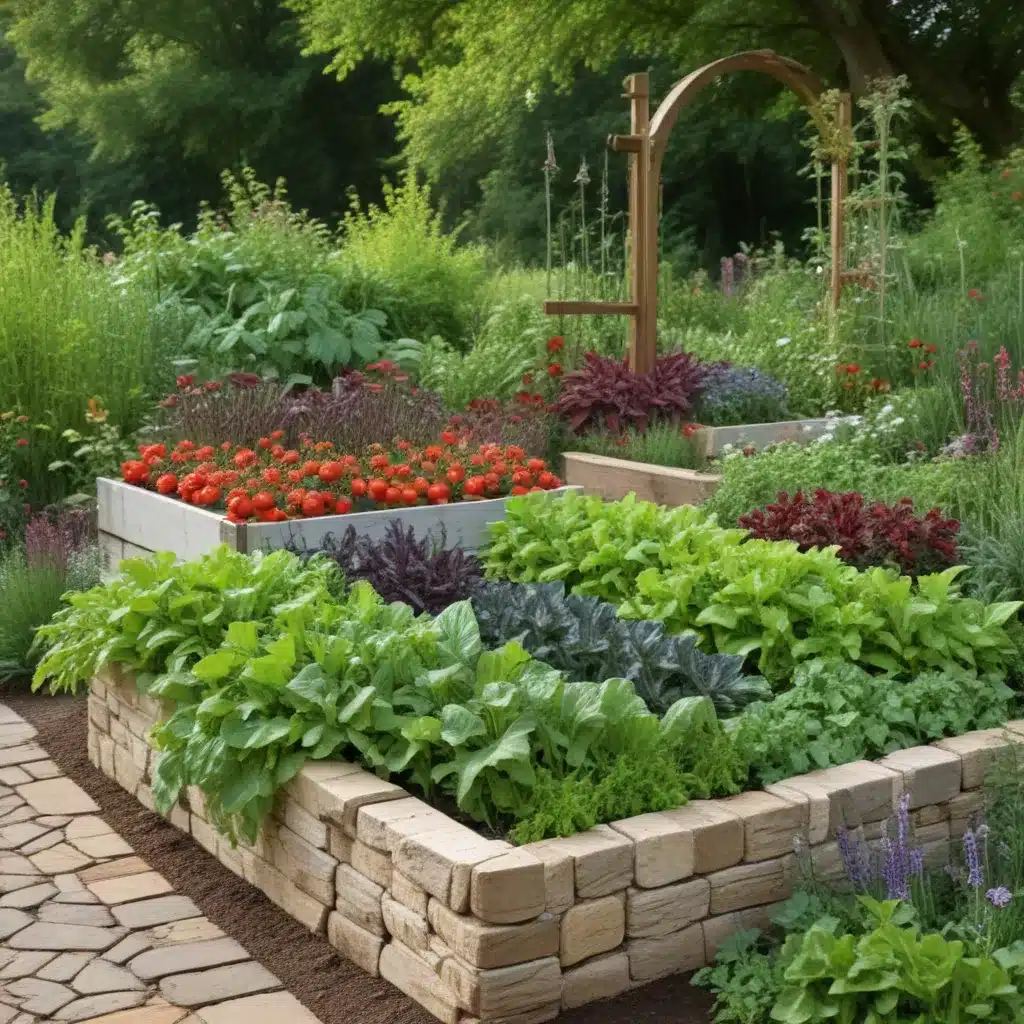
Creating a thriving, eye-catching vegetable garden requires thoughtful planning and design. Whether you have ample space or are working with a small footprint, making the most of your garden’s layout and incorporating a variety of elements can yield a bountiful harvest while delighting the senses. From maximizing productivity through efficient plant spacing and irrigation to incorporating visually stunning companions, the key is to approach vegetable gardening as an integrated, multi-faceted endeavor.
Fundamentals of Vegetable Gardening
Preparing the soil is the first crucial step towards a successful vegetable garden. Begin by conducting a soil test to determine the pH and nutrient levels. Amend the soil as needed, incorporating generous amounts of compost to improve structure, drainage, and fertility. A well-nourished, loamy soil provides the ideal foundation for your plants to thrive.
Next, select a diverse array of vegetable varieties that suit your climate, growing conditions, and culinary preferences. Consider factors like disease resistance, maturity dates, and growth habits when making your choices. Heirloom and open-pollinated varieties can add visual interest and unique flavors to your garden.
Proper planting techniques are essential for healthy starts. Whether sowing seeds directly or transplanting seedlings, ensure adequate spacing, proper depth, and gentle handling to minimize transplant shock. Succession planting, where you sow crops at intervals, can extend your harvest season and prevent gluts.
Enhancing Productivity
Optimal plant spacing is key to maximizing your garden’s productivity. Refer to seed packet instructions or gardening resources to determine the appropriate spacing for each vegetable. Avoid overcrowding, as this can lead to competition for nutrients, water, and sunlight, as well as increase the risk of disease.
Efficient irrigation and drainage are also crucial. Install a drip or soaker hose system to deliver water directly to the root zone, minimizing waste and foliar diseases. Ensure your garden has adequate drainage to prevent waterlogged soil, which can stunt plant growth and promote rot.
Ongoing nutrient management is essential for sustaining plant health and productivity. Supplement your soil with organic fertilizers, compost tea, or targeted amendments as needed throughout the growing season. Pay close attention to any signs of nutrient deficiencies and address them promptly.
Aesthetic Considerations
While productivity is paramount, incorporating harmonious color schemes and visual interest can transform your vegetable garden into a true work of art. Pair complementary hues, such as the deep purples of eggplants with the vibrant yellows of squash blossoms. Interplant flowering companions like marigolds, cosmos, or nasturtiums to add pops of color and attract beneficial insects.
Integrating vertical elements can also elevate the aesthetic appeal of your garden. Trellises, obelisks, and living walls provide support for vining crops like cucumbers, pole beans, and tomatoes, while also adding height and visual intrigue.
The principles of companion planting can help you create visually stunning and functionally beneficial arrangements. Strategically place plants that thrive together, such as basil and tomatoes or radishes and carrots, to enhance pollination, deter pests, and promote overall plant health.
Raised Bed Gardening
Raised garden beds offer numerous advantages, including improved drainage, easier access, and an extended growing season. When designing your raised beds, consider the dimensions carefully – a typical size is 4 feet wide by 8 feet long, with a depth of 10-12 inches. Use untreated, rot-resistant wood or alternative materials like cinder blocks or recycled plastic lumber.
The intensive planting techniques often used in raised beds, such as square foot gardening and succession planting, can maximize your available space. Divide the bed into square-foot sections and plant a variety of crops, taking care to respect their space requirements. Stagger your plantings to ensure a continuous harvest throughout the season.
Vertical Gardening Solutions
Incorporating vertical elements into your vegetable garden design can save valuable space while adding visual interest. Trellis systems provide support for vining crops like cucumbers, pole beans, and tomatoes, allowing you to grow more in less footprint. Ensure the structure is sturdy enough to accommodate the mature plants.
Living walls, where you grow edible plants in a vertical, modular system, can be a fantastic way to maximize your gardening space, particularly in urban or small-scale settings. These systems can also help regulate microclimate conditions, providing evaporative cooling and wind protection for your plants.
For trailing vegetables like strawberries or cherry tomatoes, hanging baskets and window boxes offer a creative solution. These elevated containers allow you to incorporate edibles into your landscape or use otherwise underutilized spaces, such as patios, balconies, or along fences.
Themed Garden Displays
Designing your vegetable garden around specific themes can bring a sense of cohesion and delight. A culinary herb garden, for example, can be a captivating sensory experience, with fragrant plantings of basil, thyme, rosemary, and oregano arranged in an aesthetically pleasing layout.
A salsa garden, featuring a variety of peppers, tomatoes, onions, and cilantro, can provide all the essential ingredients for homemade salsa. Arrange the plants in complementary colors and textures for a visually stunning display.
For families with children, a kids’ garden can be a wonderful teaching tool, sparking their curiosity and fostering a connection to the natural world. Incorporate plants with interesting textures, colors, or scents to engage the senses, and include elements like a mini-maze, bean tepee, or sunflower house to encourage imaginative play.
Whether you have ample space or are working with a small footprint, designing a productive and visually stunning vegetable garden is an achievable goal. By understanding the fundamentals of vegetable gardening, enhancing productivity through thoughtful planning, and incorporating aesthetic elements, you can create a bountiful display that delights the senses and nourishes your family. Explore the possibilities, have fun, and enjoy the harvest! For more information and inspiration, be sure to visit Crooked Pines Farm.


